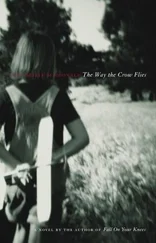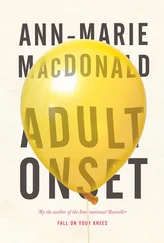Ann-Marie MacDonald
Fall on Your Knees
Dedicated with love and gratitude to
Cheryl Daniels and Maureen White
Thanks and Acknowledgements
The author wishes to thank the following individuals and organizations, as well as to acknowledge certain books that were particularly helpful in the course of her research. David Abbass, Sister Simone Abbass CND, The Canada Council, Cape Breton’s Magazine , Cheryl Daniels, Diane Flacks, Lily Flacks, Rita Fridella, Nic Gotham, Malcolm Johannesen, Honora MacDonald Johannesen, James Weldon Johnson’s Black Manhattan , Paul Fussell’s The Great War and Modern Memory , Daphne Duval Harrison’s Black Pearls: Blues Queens of the 1920’s , Arsinée Khanjian, Suzanne Khuri, Margaret MacClintock, Cuddles MacDonald, Dude MacDonald, John Hugh MacDonald, Katie MacDonald, Laurel MacDonald, Sister Margaret A. MacDonald CND, Mary Teresa Abbass MacDonald, Harold MacPhee and The Black Cultural Centre of Nova Scotia, John Mellor’s The Company Store , Bill Metcalfe and the Cape Breton Highlanders Association, New Waterford Three Score & Ten ed. Ted Boutilier, Beverly Murray, Michael Ondaatje, The Ontario Arts Council, Bridglal Pachai’s Beneath the Clouds of the Promised Land , Pearl, John Pennino and The Metropolitan Opera of New York Archives, Archival Staff of The Metropolitan Toronto Reference Library, Father Principe of Saint Michael’s College U of T, Shari Saunders, Wayne Strongman, Lillian MacDonald Szpak, Kate Terry and The Beaton Institute of The College of Cape Breton, Mrs Helen Vingoe, Maureen White, Gina Wilkinson.
“Why canst thou not always be a good lass, Cathy?”
“Why cannot you always be a good man, father?”
WUTHERING HEIGHTS
They’re all dead now.
Here’s a picture of the town where they lived. New Waterford. It’s a night bright with the moon. Imagine you are looking down from the height of a church steeple, onto the vivid gradations of light and shadow that make the picture. A small mining town near cutaway cliffs that curve over narrow rock beaches below, where the silver sea rolls and rolls, flattering the moon. Not many trees, thin grass. The silhouette of a colliery, iron tower against a slim pewter sky with cables and supports sloping at forty-five-degree angles to the ground. Railway tracks that stretch only a short distance from the base of a gorgeous high slant of glinting coal, towards an archway in the earth where the tracks slope in and down and disappear. And spreading away from the collieries and coal heaps are the peaked roofs of the miners’ houses built row on row by the coal company. Company houses. Company town.
Look down over the street where they lived. Water Street. An avenue of packed dust and scattered stones that leads out past the edge of town to where the wide, keeling graveyard overlooks the ocean. That sighing sound is just the sea.
Here’s a picture of their house as it was then. White, wood frame with the covered veranda. It’s big compared to the miners’ houses. There’s a piano in the front room. In the back is the kitchen where Mumma died.
Here’s a picture of her the day she died. She had a stroke while cleaning the oven. Which is how the doctor put it. Of course you can’t see her face for the oven, but you can see where she had her stockings rolled down for housework and, although this is a black and white picture, her house-dress actually is black since she was in mourning for Kathleen at the time, as well as Ambrose. You can’t tell from this picture, but Mumma couldn’t speak English very well. Mercedes found her like that, half in half out of the oven like the witch in Hansel and Gretel. What did she plan to cook that day? When Mumma died, all the eggs in the pantry went bad — they must have because you could smell that sulphur smell all the way down Water Street.
So that’s the house at 191 Water Street, New Waterford, Cape Breton Island, in the far eastern province of Nova Scotia, Canada. And that’s Ma on the day she died, June 23, 1919.
Here’s a picture of Daddy. He’s not dead, he’s asleep. You see that armchair he’s in? That’s the pale green wingback. His hair is braided. That’s not an ethnic custom. They were only ethnic on Mumma’s side. Those are braids that Lily put in his hair while he was asleep.
There are no pictures of Ambrose, there wasn’t time for that. Here’s a picture of his crib still warm.
Other Lily is in limbo. She lived a day, then died before she could be baptized, and went straight to limbo along with all the other unbaptized babies and the good heathens. They don’t suffer, they just sort of hang there effortlessly and unaware. Jesus is known to have gone into limbo occasionally and taken a particularly good heathen out of it and up to heaven. So it is possible. Otherwise…. That’s why this picture of Other Lily is a white blank.
Don’t worry. Ambrose was baptized.
Here’s one of Mercedes. That opal rosary of hers was basically priceless. An opal rosary, can you imagine? She kept it pinned to the inside of her brassiere, over her heart, at all times when she wasn’t using it. Partly for divine protection, partly out of the convenience of never being without the means to say a quick decade of the beads when the spirit moved her, which was often. Although, as Mercedes liked to point out, you can say the rosary with any objects at hand if you find yourself in need of a prayer but without your beads. For example, you can say it with pebbles or breadcrumbs. Frances wanted to know, could you say the rosary with cigarette butts? The answer was yes, if you’re pure at heart. With mouse turds? With someone’s freckles? The dots in a newspaper photograph of Harry Houdini? That’s enough, Frances. In any case, this is a picture of Mercedes, holding her opal rosary, with one finger raised and pressed against her lips. She’s saying, “Shshsh.”
And this is Frances. But wait, she’s not in it yet. This one is a moving picture. It was taken at night, behind the house. There’s the creek, flowing black and shiny between its narrow banks. And there’s the garden on the other side. Imagine you can hear the creek trickling. Like a girl telling a secret in a language so much like our own. A still night, a midnight clear. It’s only fair to tell you that a neighbour once saw the dismembered image of his son in this creek, only to learn upon his arrival home for supper that his son had been crushed to death by a fall of stone in Number 12 Mine.
But tonight the surface of the creek is merely as Nature made it. And certainly it’s odd but not at all supernatural to see the surface break, and a real live soaked and shivering girl rise up from the water and stare straight at us. Or at someone just behind us. Frances. What’s she doing in the middle of the creek, in the middle of the night? And what’s she hugging to her chest with her chicken-skinny arms? A dark wet bundle. Did it stir just now? What are you doing, Frances?
But even if she were to answer, we wouldn’t know what she was saying, because, although this is a moving picture, it is also a silent one. All the pictures of Kathleen were destroyed. All except one. And it’s been put away.
Kathleen sang so beautifully that God wanted her to sing for Him in heaven with His choir of angels. So He took her.
A long time ago, before you were born, there lived a family called Piper on Cape Breton Island. The daddy, James Piper, managed to stay out of the coal mines most of his life, for it had been his mother’s great fear that he would grow up and enter the pit. She had taught him to read the classics, to play piano and to expect something finer in spite of everything. And that was what James wanted for his own children.
Читать дальше












